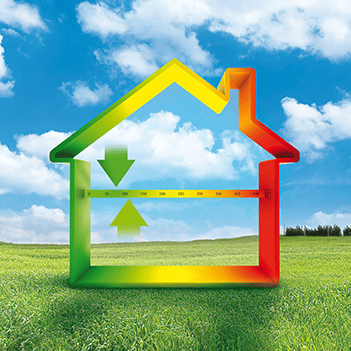In December 2023, the Department for Levelling Up, Housing and Communities, opened the Future Homes and Building Standards consultation process for public consideration. Industry views and responses are strongly encouraged via the online survey (see item 1.2.4: How to Respond). Click here to access the survey and submit your feedback. The deadline for feedback to be received is 6 March 2024.
Summary
The consultation process provides information for achieving the new requirements under the Future Homes Standard and Future Buildings Standard. It sets out technical proposals for changes to the Building Regulations, the associated Approved Document guidance and calculation methods.
Aiming to improve carbon emissions by 75% over 2013 standards, the Future Homes Standard is the mechanism towards achieving net-zero carbon homes by 2050. The 2021 changes to the Building Regulations achieved a 31% reduction, so this latest update to the Building Regulations is the next step in the threshold to achieve compliance of the Future Homes Standard and Future Building Standards.
Key Points
The ‘Notional Building’ Specification identifies a scenario that would comply with the new changes to the Building Regulations and provides a direction to where the new regulations are looking to take the industry in terms of energy use, which is away from gas and towards electric. The ‘Notional Building’ also identifies the fabric limits of the building.
Two options for the ‘Notional Building’ are detailed in the consultation information and a summary can be found in Tables 4.1 and 4.2. It should be noted that both options do not include the use of Gas for the heat source and indicate a move towards Air Source Heat Pumps.
Option 1: Aims to maximise carbon savings, balanced against reducing energy bills for households, but comes with additional upfront costs for Developers.
Heat source: Air source heat pump equivalent to ErP A++
Renewable energy: Solar PV panels covering equivalent of 40% of ground floor area
Fabric: Sames as 2021 regs
Ventilation: Decentralised Mechanical Extract Ventilation (dMEV)
Option 2: Is the minimal approach to achieve ‘zero-carbon ready’ homes. A home built to this specification would be more expensive to run, but the build costs to Developers will be less.
Heat source: Air source heat pump equivalent to ErP A++
Renewable energy: None
Fabric: Sames as 2021 Regs
Ventilation: Natural ventilation with intermittent extract fans
Both options include a high efficiency air-source heat pump and good fabric standards to minimise heat loss from windows, walls, floors and roofs (the same as the standards set in the 2021 uplift to Part L), and would result in lower bills than typical existing homes.
Building Fabric:
The proposed options do not recommend any update to the minimum building fabric standards for homes. This suggests that the current minimum building fabric specifications (cavity walls, floors, roofs, windows etc.) as set out in the 2021 regulations provide a good basis for the Future Homes and Buildings Standards and will not need to change.
Transitional arrangements:
As with the 2021 Part L uplift (6 months between laying the regulations and the standards coming into force, followed by a 12-month transitional period), similar transitional arrangements are being considered for the two proposed options:
Option 1: a 6-month period between the laying date of the Future Homes and Buildings Standard regulations and publication of full technical specification and the regulations coming into force.
Option 2: up to 12-months between the laying date of the Future Homes and Buildings Standard regulations and publication of full technical specification and the regulation coming into force.
Both options would be followed by a 12-month transitional period and, as with the 2021 Part L uplift, the transitional arrangements for the 2025 Future Homes and Buildings Standards will apply to individual buildings on a site.
New Methodology:
A new methodology and system for calculating the performance and compliance of new dwellings, the Home Energy Model, is being proposed to meet the required changes. This will replace the current SAP Calculation Methodology.
Essentially, the Home Energy Model will provide the same result as the SAP Calculation (Standard Assessment Procedure) but in a way that is appropriate for the Government’s Net Zero Target. It is also possible that changes to a dwelling’s EPCs (Energy Performance Certificates) will occur with the introduction of a Home Energy Model.
Finally, The Future Homes Standard and the proposed new Part L 2025 will no doubt have a significant impact on Developers, with the key issue being the move from gas towards electric as the main heat source within a dwelling.
We hope this update is of interest and helps you plan for the next change in Building Regulations. Should you require any assistance please do not hesitate to contact the office.





